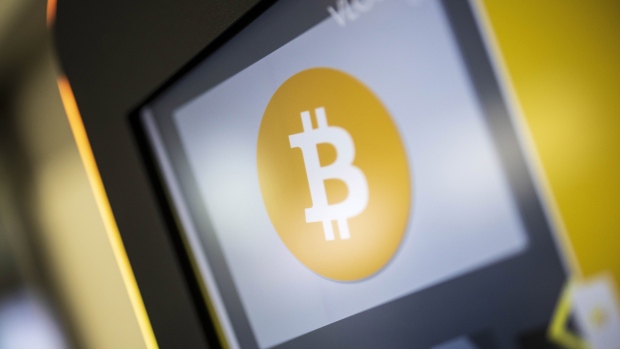Tech
Bitcoin’s correlation with tech stocks jumps to its highest level since August

Bitcoin was lumped in with other speculative investments in the run-up to the U.S. Federal Reserve’s latest tightening cycle, collapsing on expectations that higher interest rates would dampen risk appetite. Now as optimism grows again that funding costs could soon fall, supporters of the largest cryptocurrency say it is more like high-growth assets such as shares of technology companies.
The token has been trading as such lately. The 90-day correlation coefficient of the digital currency and the tech-heavy Nasdaq 100 index reached 0.46 this week, the highest level since late August. A coefficient of 1 indicates that the assets are moving in lockstep, while minus 1 would indicate that they are moving in opposite directions. After the Fed began raising the target rate on overnight loans between banks in early 2022, the correlation jumped to above 0.8, the highest level since digital assets burst into mainstream consciousness.
“People are refocusing on cryptocurrencies as a growth asset or as an asset that represents network value,” said Joshua Lim, co-founder of trading firm Arbelos Markets. “Its capacity as a technology and value transfer mechanism, and that means it will be more correlated to other assets that are also quite growing like the Nasdaq, tech stocks, that kind of thing.”
Bitcoin supporters have long touted the currency as an uncorrelated asset, which is not tied to any government and is unlikely to be affected by external forces or factors. When it was first introduced to the world in 2008 by an anonymous person – or group of people – known as Satoshi Nakamoto, the goal was to create a decentralized currency outside the control of governments and central banks. Over the years, it has been variously touted as a digital version of gold, a hedge against inflation, and a store of value. Bitcoin’s price volatility has undermined many of these narratives. The approval by US Exchange Traded Funds earlier this year to directly hold Bitcoin has opened the token to a new level of investors.
“Since the beginning of 2024, we have seen quite a positive correlation between the S&P 500 and Bitcoin, which is unusual and completely shatters the theory that it is a store of value,” said Toby Winterflood, chief product CCData officer. “I really think the main reason we’re seeing it peak right now is because of how ETFs have hit real maturity, being some of the fastest growing ETFs in history.”
Bitcoin surged after ETFs went live in January, reaching a record high of nearly $74,000 in March, before paring gains as demand for the investment vehicles began to cool. The token rose about 1.4% on Friday to around $66,200, and is up nearly 10% this week. Bitcoin has jumped about 58% this year, compared to an 11% rise in the Nasdaq 100.
“These have been a lot of motivators for traditional allocators outside of crypto to pay attention to the asset class and start buying it,” Lim said, referring to U.S. ETFs, Bitcoin hitting an all-time high in March and at its halving of the blockchain. in April. “Now that these catalysts are behind us, there is more focus on just the bigger macroeconomic picture.”
Data released Wednesday showed underlying U.S. inflation eased in April for the first time in six months, providing some progress in the direction Fed officials would like to see before cutting rates. The main consumer price index, which excludes food and energy costs, rose 0.3% from March, after three months of higher-than-expected values. However, several Fed officials noted Thursday that the central bank is expected to keep borrowing costs high for longer as policymakers await further evidence that inflation is easing, suggesting they are in no rush to cut rates.
“If the Fed were to lower rates, I think overall that would be bullish for risky assets,” Lim said. “And so that would be bullish for cryptocurrencies as well.”
While many cryptocurrency investors have turned their attention back to the Fed, CCData found that Bitcoin has remained fairly stable in its growth and resilience since the release of the US ETFs, Winterflood said.
“So it will be interesting to see what happens” if the Fed cuts rates in the coming months, Winterflood said. “I wonder if Bitcoin will behave the same way as before, being the riskiest type of asset, or if it will actually start to become just an alternative asset seen by traditional markets.”
